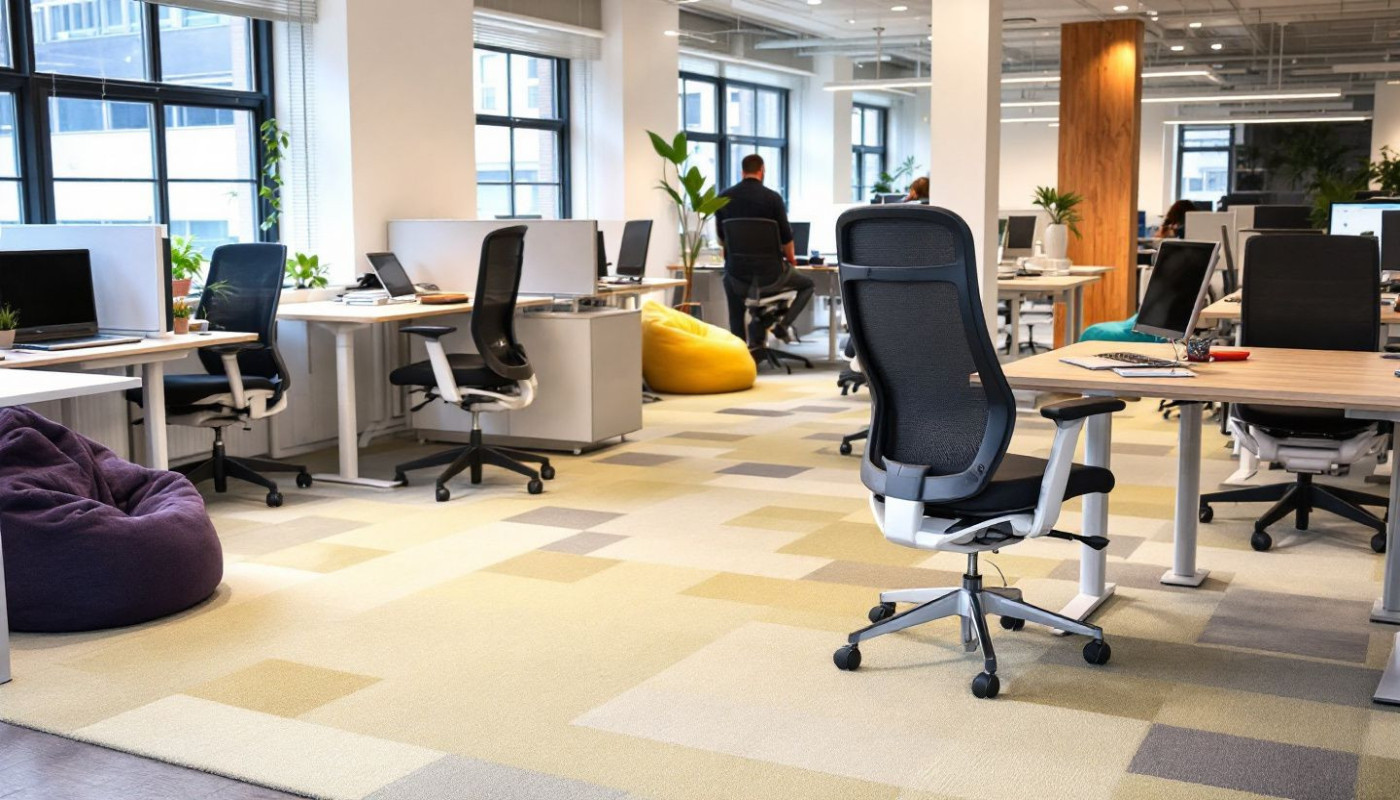Table of contents
In today’s dynamic work culture, the traditional office setup is rapidly giving way to innovative solutions like flexible seating options. These modern workspace arrangements promise not just comfort, but also a measurable boost in productivity for individuals and teams alike. Explore the following sections to discover how embracing flexibility in seating can transform your workspace and unlock new levels of efficiency.
Flexible seating explained
Flexible seating refers to adaptable workspace design strategies that prioritize choice and mobility within the modern office. Unlike traditional assigned desks, flexible seating incorporates methods such as hot-desking, where employees select available workstations daily, collaborative zones designed for teamwork, and lounge areas that offer relaxed environments for informal meetings or focused work. These arrangements reflect the principles of activity-based working, supporting a range of tasks and work styles by allowing individuals to select the setting that best suits their needs. In contrast to static, one-size-fits-all seating plans, flexible seating encourages movement and autonomy, ultimately driving productivity and strengthening employee engagement throughout the workspace.
By integrating a mix of ergonomic furniture and spatial configurations, flexible seating creates a dynamic ecosystem that adapts to the evolving requirements of modern office environments. The approach not only maximizes the use of available space but also fosters a sense of ownership and satisfaction among employees, leading to increased collaboration and higher work output. Workspace design that emphasizes flexibility gives organizations the ability to respond swiftly to changes in team size, project scope, or work patterns, making it a cornerstone in the pursuit of enhanced productivity and a positive workplace culture.
Impact on productivity
Flexible seating has a significant impact on productivity by catering to the diverse needs of employees and promoting office efficiency. Research in cognitive ergonomics demonstrates that offering choices in seating arrangements allows individuals to select environments best suited to their current tasks, whether they require deep focus, collaborative discussion, or relaxed brainstorming. Case studies reveal that organizations adopting flexible seating models often experience measurable improvements in work performance and employee satisfaction. For example, a survey published by Steelcase indicated that companies implementing these solutions saw a rise in reported comfort and engagement, leading to fewer distractions and better management of energy throughout the workday. The adaptability of flexible seating also supports physical movement, reducing fatigue and maintaining concentration levels, which directly translates into higher productivity rates.
In addition, offices that prioritize flexible seating options create adaptable ecosystems similar to those found in leading shared work environments. These dynamic arrangements foster a sense of ownership and autonomy, which is closely linked to improved morale and job satisfaction. The positive effects seen in the Best coworking spaces in London serve as real-world examples, with users benefiting from spaces that embrace cognitive ergonomics and provide environments conducive to both individual and team-based tasks. As a result, implementing flexible seating strategies not only enhances work performance but also increases office efficiency by allowing employees to find optimal settings for their daily responsibilities.
Enhancing collaboration and creativity
Flexible seating options are transforming the collaborative work environment by encouraging seamless collaboration and igniting creativity among teams. In innovative workspace settings, such as those found in tech startups and creative agencies, flexible seating arrangements allow team members to easily move between groups, share ideas, and participate in impromptu brainstorming sessions. Furniture that can be rearranged, such as modular sofas and moveable desks, breaks down physical barriers and promotes teamwork by making it simple for people from different departments to come together. This approach is particularly evident in creative industries like advertising and digital design, where rapid, spontaneous interaction is essential for generating unique concepts. Companies renowned for their success in innovation, like Google and Pixar, have adopted flexible seating to cultivate a dynamic environment where creativity and collaboration thrive, demonstrating the powerful impact of workspace design on productivity and idea generation.
Adapting to employee preferences
Flexible seating strategies are transforming modern offices by catering to employee preferences for comfort, privacy, and individual working styles. The concept of workplace personalization allows staff to choose environments that best suit their needs, whether that means quiet corners for focused tasks or collaborative zones for brainstorming sessions. This customization supports a diverse workforce, acknowledging that some employees thrive with open communication while others prefer less distraction. Human resources directors emphasize that when companies recognize and act upon these varying preferences, it not only boosts daily comfort but also reinforces a sense of value and belonging among team members. Such an approach directly impacts employee retention, as individuals are more likely to remain with organizations that respect their unique requirements and promote their overall well-being through flexible seating and personalized workspace solutions.
Implementing flexible seating successfully
For a facilities manager aiming to drive successful flexible seating implementation, a well-structured plan is the foundation of an effective workspace strategy. Begin by assessing office layouts and employee roles to determine which flexible seating models—hot desking, activity-based zones, or neighborhood seating—align with organizational needs. Clear and consistent communication is vital; keeping teams informed about the transition and fostering feedback reduces resistance. Training sessions and visual guides can help employees understand new protocols, facilitating smoother employee adoption. Integrating advanced office technology, such as desk booking software, occupancy sensors, and real-time analytics platforms, supports a seamless experience and enables data-driven decisions. Change management processes should be established to address concerns, set expectations, and ensure leadership models the new behaviors.
Organizations may encounter challenges such as reluctance to shift from assigned seats, uncertainty around hygiene, or confusion with new processes. These can be mitigated by prioritizing transparency in communication, providing hygiene resources, and offering technical support for office technology. Regularly monitoring feedback and adapting policies will further boost employee confidence and engagement. When flexible seating implementation is strategically managed, organizations not only optimize space but also foster an adaptive, collaborative culture that enhances overall productivity.
Similar







